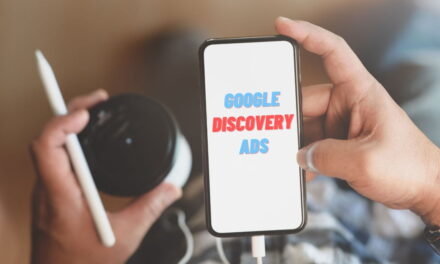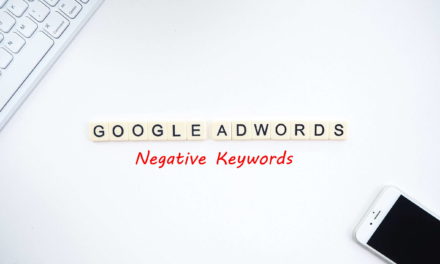You may have spent weeks researching on the best keywords, hired the most talented copywriters and created an eye-catching sales page. However, if you do not pay attention to your campaign quality score within Google Ads, it could all come down to nothing.
A poor quality score could mean your ads not showing up on the first page of Google Search Network. It could also result in you paying a much higher amount per click than your competitors. A number of factors can be affected depending upon the quality score of your Google Ads campaign.
What is quality score in Google Ads?
Quality score is a metric used by Google Ads to understand the relevance of your keyword, ad content and landing page to a user.
The concept of quality score was introduced in order to show the most relevant ads to a user and ensure advertisers were not abusing the system.
This means your keyword, ad content as well as landing page content should be similar. It should be relevant to what the user was searching. It shouldn’t happen that advertisers trick users into reaching a page that was not of initial interest to them.
In fact after quality score was introduced many years ago, customer experience of those searching for products or services on Google went up. Advertisers were forced to pay attention to their content and ensure they bid on relevant keywords for their business.
From an advertiser point of view, higher the quality score, higher their ad rankings on Google. It also means a lower cost per click which is incredibly important for better return on investment. Of course lower the quality score, you can expect lower rankings and high cost per click rates.
What impacts quality score?
While there are a number of factors that impact your overall quality score, given below are some of the more important ones that need extra attention.
1) User experience: When you are adding keywords, think whether they are relevant to the product or service you are actually selling. A good user experience would be your ad shows up for a keyword they searched on Google. The ad convinced them to click and now your landing page has more, easily accessible information relevant to what the user was searching for.
If the ad and landing page content was relevant to the keyword, it is likely the user will spend some time browsing your landing page than going off within seconds.
This overall experience is extremely important when it comes to quality score in Google Ads.
2) CTR (Click Through Rate): This is perhaps the most important factor in achieving a good quality score. Click through rate is basically the ratio between the number of times your ad gets displayed and the number of times your ad gets clicked.
If your ad is being clicked more often than not, Google algorithms get an idea that the ad is highly relevant to the user.
This factor also relies on historical data so your quality score goes up as your ad campaign keeps running over time. Mind you if your ad is hardly getting any clicks, you need to change it as over time, low CTR would impact the quality score of your overall campaign.
3) Landing page: We spoke about landing page above in user experience. However, you need to pay genuine attention to your landing page for several aspects that affect quality score. These are:
- Load time
- Responsiveness
- Bounce rate
- Content accessibility
- Easy access to other information including menus, contact details etc.
- Actual content on the landing page.
All of the above are important for a good user experience on your landing page.
How to improve quality score in Google Ads?
Following are some suggestions on improving your quality score.
1) Smaller Ad Groups: Don’t go crazy adding a huge number of keywords to a particular ad group. If you have too many keywords, it is highly unlikely that all of them would have content similar to your ad text and landing page content.
Group relevant keywords into small ad groups and ensure your ad content as well as landing page is relevant to those keywords.
2) Use Long-tail keywords: Long-tail keywords have a higher chance of matching what a user is searching for in Google.
One word keywords could actually end up meaning anything. Your ads will not always be relevant to someone searching for such keywords.
For example, if you simply bid on the keyword ‘shoes’. Is the user looking for shoes cleaners? Are they looking for party shoes? Are they simply trying to learn how to make shoes or where they are made?
As you can see, there is a lot of ambiguity with the single keyword ‘shoes’. Now if you bid for ‘formal shoes for office men’. That is highly targeted. Of course this was a long key-phrase and typically two or three words can be fine to target your ads in a more relevant manner.
3) Landing page: We spoke about this above in what impacts quality score. Pay attention to each aspect listed above. This includes your landing page content, whether its easily accessible from both mobiles and desktops, whether the page loads quickly etc.
A good user experience on the landing page will improve quality score over time.
4) Ad Content for better CTR: Click through rate is perhaps the most important factor in improving your quality score.
For better CTR, you need to take some time and create highly catchy as well as relevant ad content. Users should be compelled as well as intrigued to click on your ad.
As you get more clicks, the quality score improves.
It is important to test ads and check which ones get higher click through rates. Obviously keep the ones that are performing well and discard the ones that do not perform well.
5) Broad vs Exact match keywords: One aspect of our ad campaign which we often don’t realize is that by default, Google uses broad matches to display our ads.
This means your ad could be triggered by variations of the keywords you are using in your ad groups.
Now it is not always possible to use exact match keywords especially considering it highly reduces the number of people you can reach. However, it is important to get an idea which keywords are actually triggering your ad.
Some marketers use negative lists to ensure ads are not being shown for irrelevant keywords.
Therefore, using a healthy mix of exact match keywords, broad but relevant keywords and also using negative lists will improve your quality score.
One thing you should always remember when it comes to quality score is that much of it takes into consideration historical data of your campaign.
Therefore quality score is something that can improve or decline overtime. You as an advertiser will have to continually use split testing or A/B testing to ensure you have the best keywords, high performing ad content and great landing page user experience.
Get a huge competitive advantage.
Learn about your competitor’s EXACT Google Adwords campaign from which keywords they are using to cost per click, ad texts, landing page URLs, budget spend etc.





